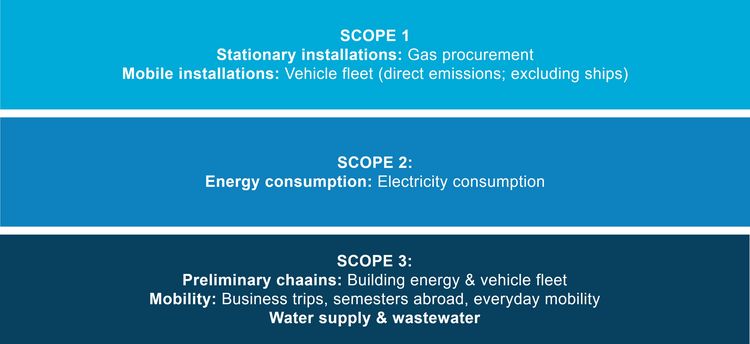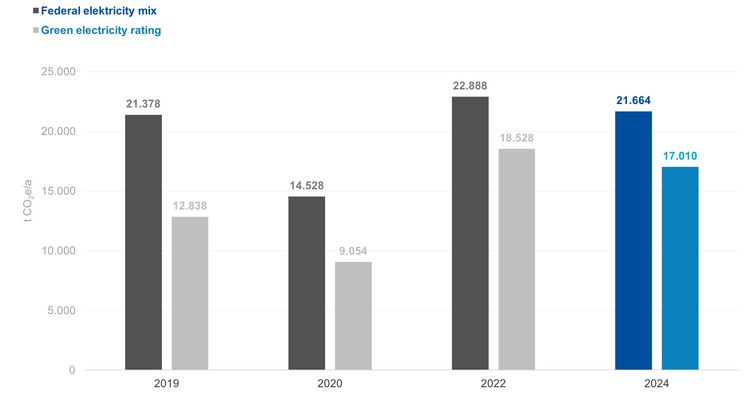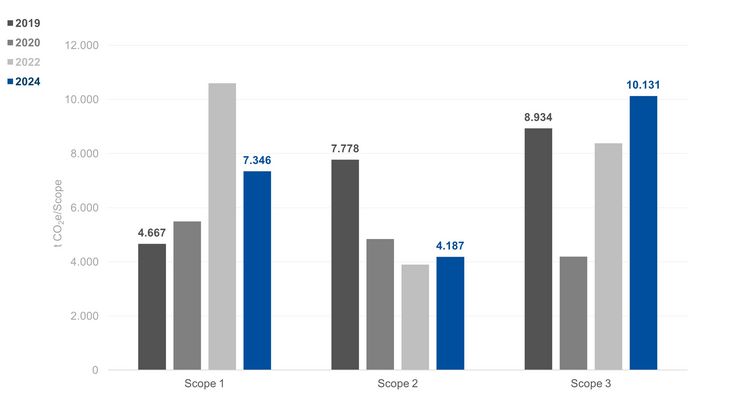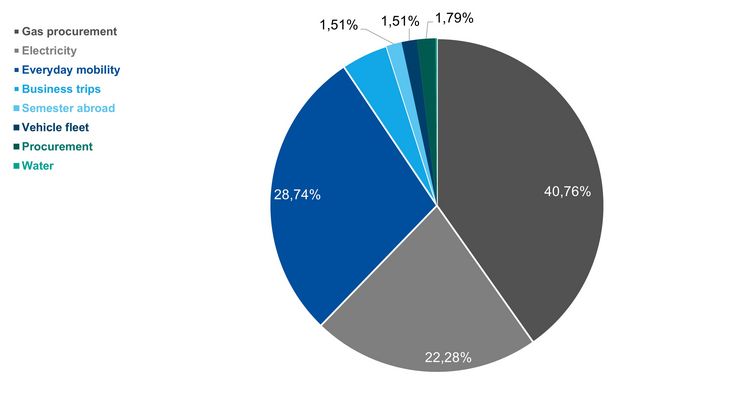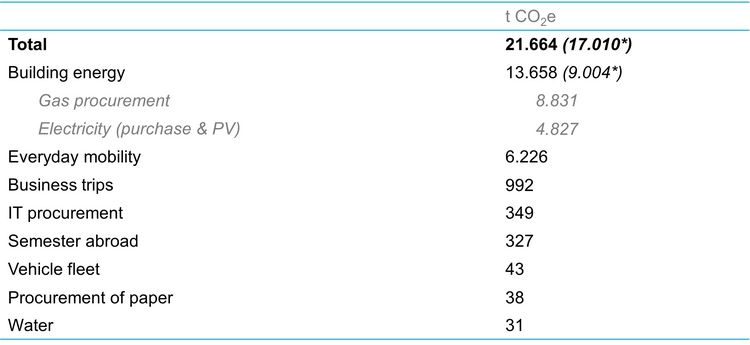Greenhouse gas balance
COUNTS
Since August 2023, HochNiNa has been coordinating the COUNTS project (standardization, further development and communication of greenhouse gas balances of universities in Lower Saxony). As part of the project, a common greenhouse gas accounting framework is being developed for universities in Lower Saxony that takes into account the specific circumstances and requirements of universities. On this basis, a freely accessible web-based balancing tool will be developed.

Greenhouse gas balance
The accounting of greenhouse gas emissions (GHG emissions) is at the heart of sustainability management at the university. The greenhouse gas balance is calculated in accordance with the Greenhouse Gas Protocol. The balance is calculated every two years. The GHG balance sheet for 2024 will be the third balance sheet for the University of Oldenburg. The next balance sheet will be calculated in the summer of 2027 for the year 2026.
Methodology and System Limitations
For the 2024 financial year, the greenhouse gas balance was determined in accordance with the Greenhouse Gas Protocol Scope 1-3, which serves as an international standard. In addition, dual reporting is carried out by reporting location-based (federal electricity mix) and market-based approaches (green electricity).
The scope of the 2024 GHG balance sheet covered the following areas of activity:
- Scope 1: Gas procurement, vehicle fleet (excluding upstream chains; excluding ships)
- Scope 2: Electricity procurement
- Scope 3:
- Upstream chains (building energy & vehicle fleet)
- Mobility (business trips, semester abroad, everyday mobility)
- Procurement (IT, paper)
- Water consumption & waste water
The aim is to further develop and refine the data basis for greenhouse gas accounting in the future so that areas not previously taken into account (e.g., office furniture, overnight stays on business trips, etc.) can also be included in the balance sheet.
- Data evaluation deadline: August 8, 2025
- Publication: November 5, 2025
Total emissions 2024
The total emissions of Carl von Ossietzky University in 2024 amounted to 21,664 t CO2-equivalents, representing a slight decrease compared to 2022. Taking into account market-based green electricity products, emissions in 2024 amounted to 17,010 t CO2-equivalents. This is mainly due to measures in the area of energy efficiency and the improved emission factor for electricity procurement as a result of the nationwide expansion of renewable energies. However, compared to the base year 2019, emissions remain slightly above the base balance by 286 t CO2-equivalents.
Development of emissions according to Scope 1-3
Broken down into the three scopes of the Greenhouse Gas Protocol, emissions have developed differently. New energy efficiency measures, particularly heat recovery in the data center, have reduced Scope 1 emissions, which stood at 17,346 tons of CO2 equivalents in 2024. Emissions in Scope 2 rose slightly to 4,187 t CO2-equivalents. Mainly due to the increase in emissions in the area of everyday mobility, emissions in Scope 3 rose to 10,131 t CO2-equivalents.
Breakdown according to fields of action
The largest share of total emissions is attributable to building energy. In 2024, this accounted for a total of 13,658 tons of CO2 equivalents, based on the federal electricity mix. Taking green electricity products into account, this area of activity accounted for 9,004 tons of CO2-equivalents. Overall, building energy accounted for 63.04% of total emissions in 2024. According to the federal electricity mix assessment, the percentage share of electricity consumption was 22.28% and that of gas consumption was 40.76%.
The area of mobility in particular continues to be of great importance. A total of 6,226 t CO2-equivalents were caused by everyday mobility. That is 28.74% of total emissions. In addition, there are further tonnes of CO2-equivalents from mobility due to business trips (992 t CO2-equivalents), semesters abroad (327 t CO2-equivalents) and the use of the vehicle fleet (43 t CO2-equivalents). The remaining emissions come from the procurement of IT-equipment (349 t CO2-equivalents) and paper (38 t CO2-equivalents), as well as water procurement and wastewater (31 t CO2-equivalents).
Dual Reporting 2024
For the presentation of emissions in Scope 2, the accounting standard of the GHG Protocol stipulates that emissions be presented according to two different approaches.
On the one hand, the location-based approach applies, according to which the emissions from electricity procurement are to be determined taking into account the federal electricity mix. This is intended to compensate for regional differences in the electricity mix purchased in order to enable better comparability of the figures. In addition, this approach makes it easier to show the effect of efficiency measures in electricity consumption on emissions. According to this approach, the total emissions of the university are 21,664 t CO2-equivalents in 2022.
According to the market-based approach, it can be taken into account that the organisation already purchases green electricity from a green electricity contract. At this point, therefore, the guarantees of origin from the production of renewable energies from third parties can be credited. Through the state of Lower Saxony, the University of Oldenburg is integrated into a framework agreement for green electricity. Accordingly, the emissions in the market-based approach for Scope 2 (=electricity procurement) are to be set at 0 t CO2-equivalents. The total emissions are then 17,010 t CO2-equivalents. This increases the share of the other fields of action in the total emissions.


